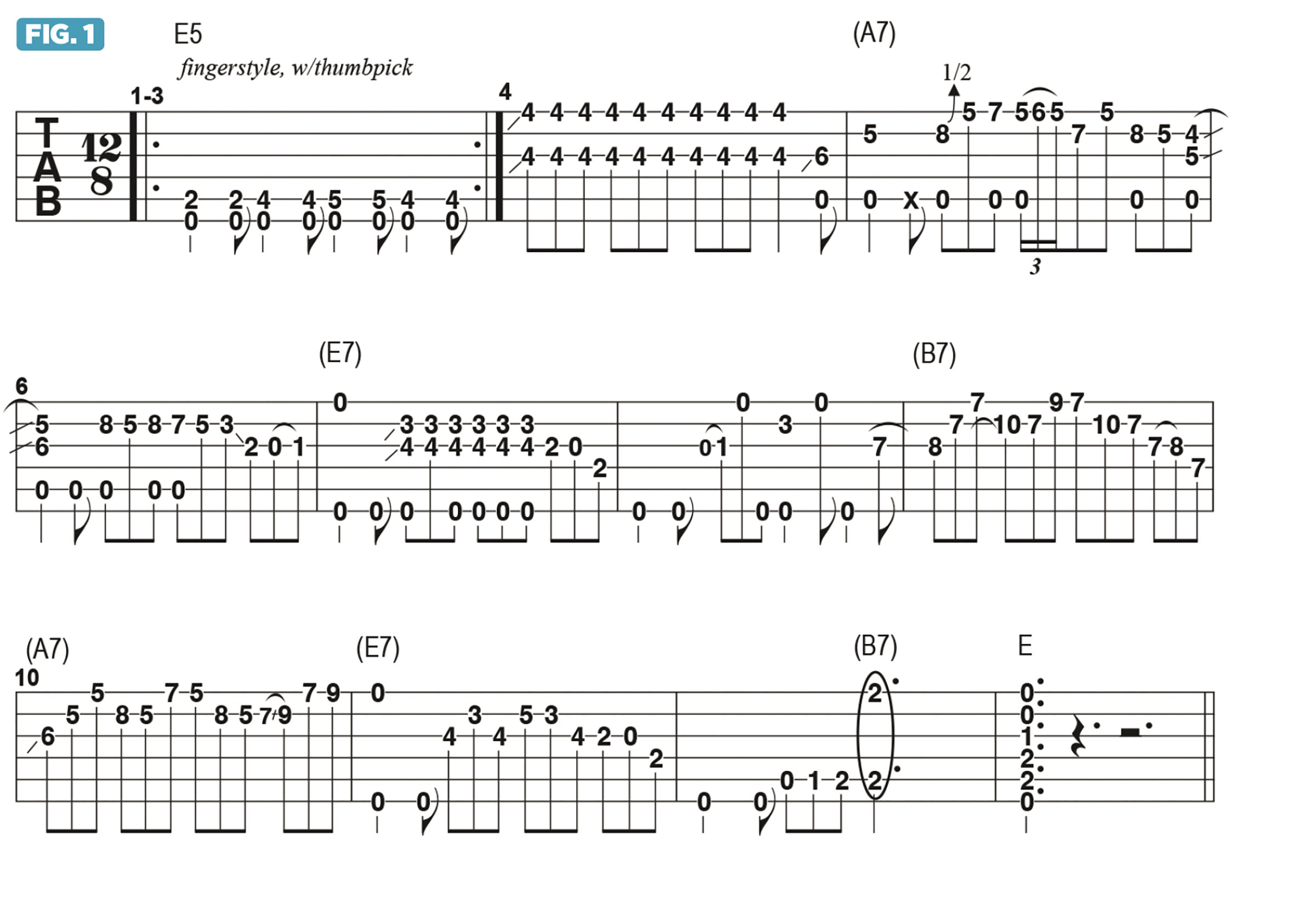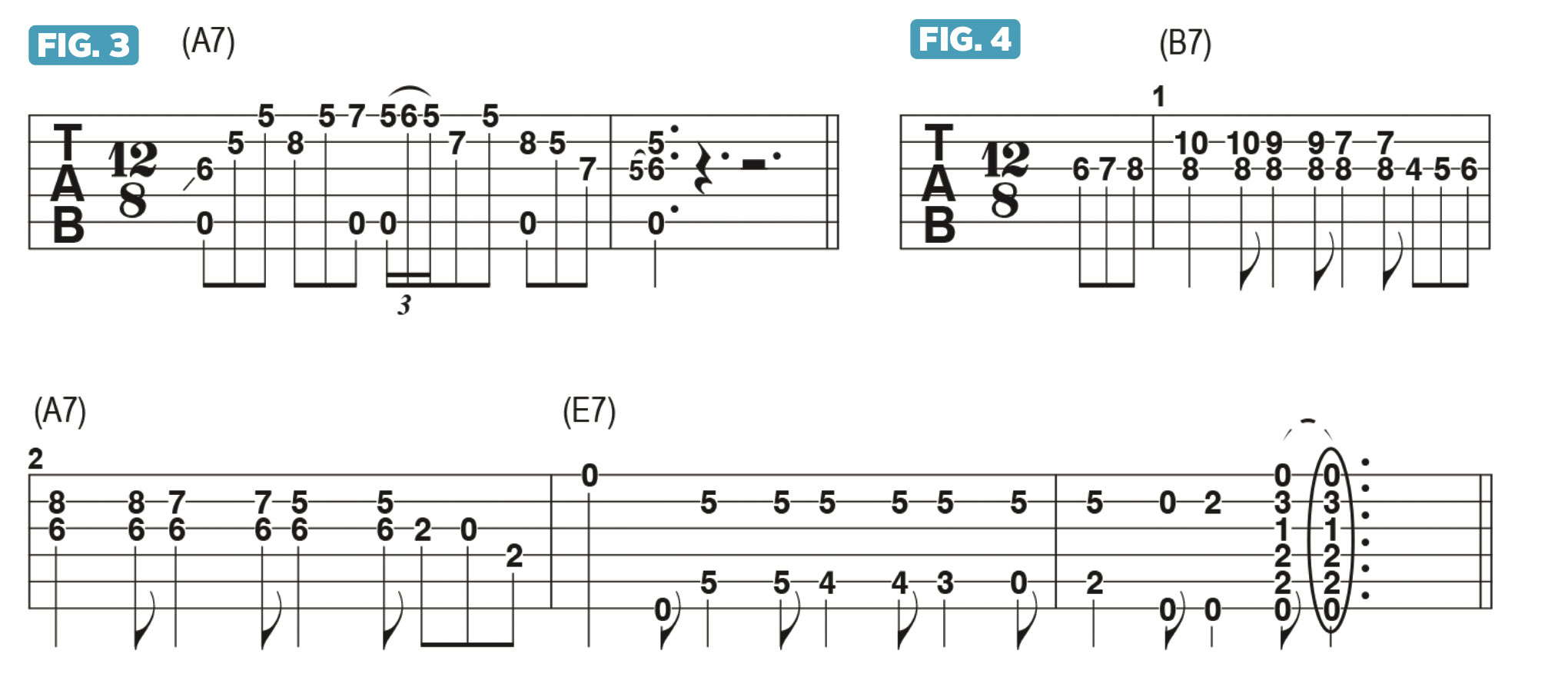In my last column, I introduced an approach to playing through a 12-bar blues shuffle in the key of E with some of my favorite licks to play over the IV (four) chord, A7, and the V (five) chord, B7. This time, we’ll expand on these ideas with melodic phrases that work perfectly over these chord changes.
Figure 1 illustrates the 12-bar blues form in E, starting with the stock root-5th, root-6th boogie vamp pattern, moving from E5 (E and B) to E6 (E and C#) on each beat through bars 1-3. I begin bar 4 by sliding into a two-note shape known as a 6th, so called because the two notes – B and G# – are six major scale tones, or degrees, apart.
At the end of this bar, I anticipate the move to the IV chord by playing my open A string along with C#, the major 3rd of A, on the G string. This sets up the lick over A7 in bars 5 and 6.
On beat 2 of bar 5, I play, over an open A pedal tone, a lick based on the E blues scale (E, G, A, Bb, B, D), with the inclusion of F#, which can be thought of as either the 2nd, or 9th, of E or the 6th of A.
Over the last two beats of bar 6, I anticipate the change back to the I chord with a lick based on E the minor pentatonic scale (E, G, A, B, D) that also includes, G#, the major 3rd of E, and I stick with this sound through bars 7 and 8.

The end of bar 8 then anticipates the move to the V chord, B7, with a hammer-on from D to a D# that falls on beat 1 of bar 9. D# is the major 3rd of B7, and the remainder of the lick is based on B minor pentatonic (B, D, E, F#, A) with the inclusion of the 2nd, or 9th, C#.
In bar 10, I shift down two frets to play a similar line over A7. Notice that the “shape” of this phrase is nearly identical to what I played over B7, but now it’s a whole step and two frets lower.

Figure 2 offers a look at the shift from B7 to A7. Bar 1 begins with the notes D# and F#, which are the major 3rd and 5th of B7, and bar 2, played over A7, is a mashup of E minor pentatonic and E major pentatonic (E, F#, G#, B, C#). Figure 3 demonstrates another option for a great blues phrase to play on the change back to A7.
Let’s wrap up with Figure 4. In bar 1, over B7, I play simple two-note forms that descend from B7 to B6 to B, and in bar 2, over A7, I move the idea down a whole step and two frets to sound A7, A6 and A.
The phrase then ends with a classic oblique-motion blues turnaround, as a D note on the 5th string descends chromatically to B, picked together with a reiterated high E root note sounded on the 2nd string.

You’ll hear these kinds of licks in the playing of Chicago blues guitar greats like Jimmy Rogers, the Myers Brothers and Luther Tucker, not to mention the great Texas guitarist Johnny Winter, whose ’80s albums with Muddy Waters, such as Hard Again, I’m Ready and King Bee, are fantastic and must-listens for all blues guitar fans.
- This article first appeared in Guitar World. Subscribe and save.







